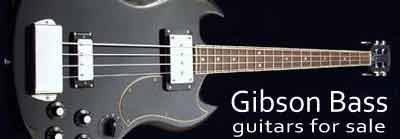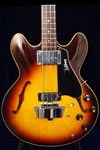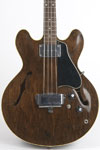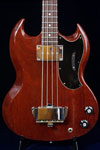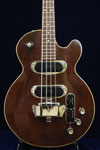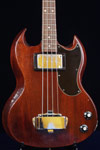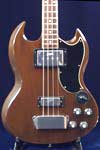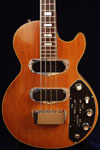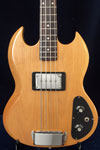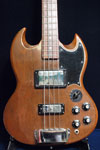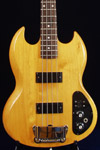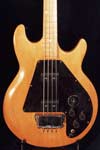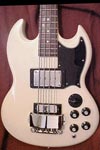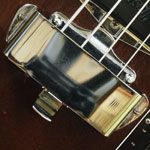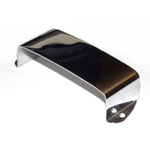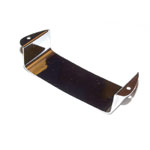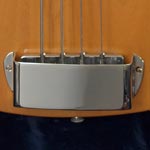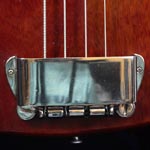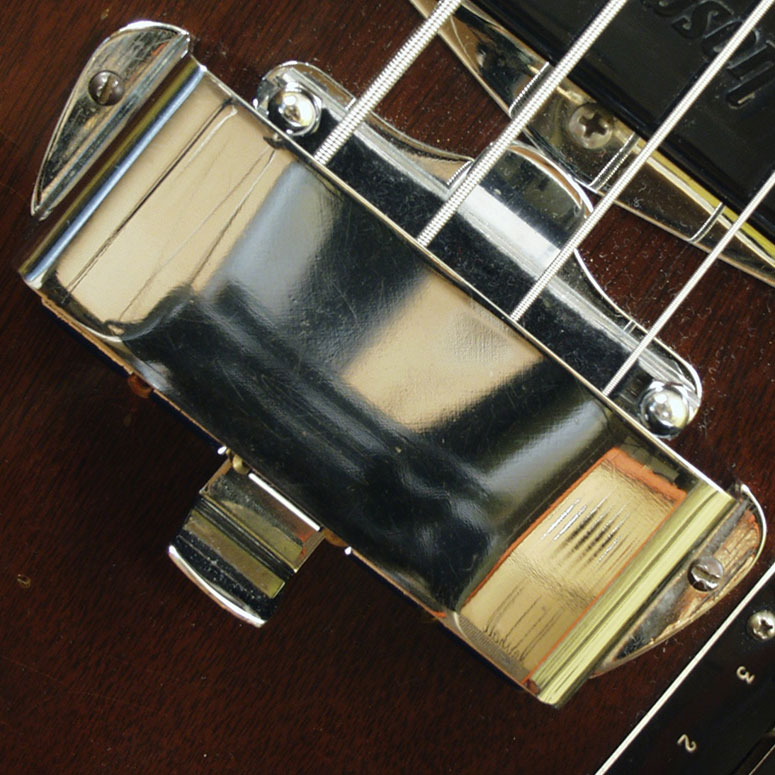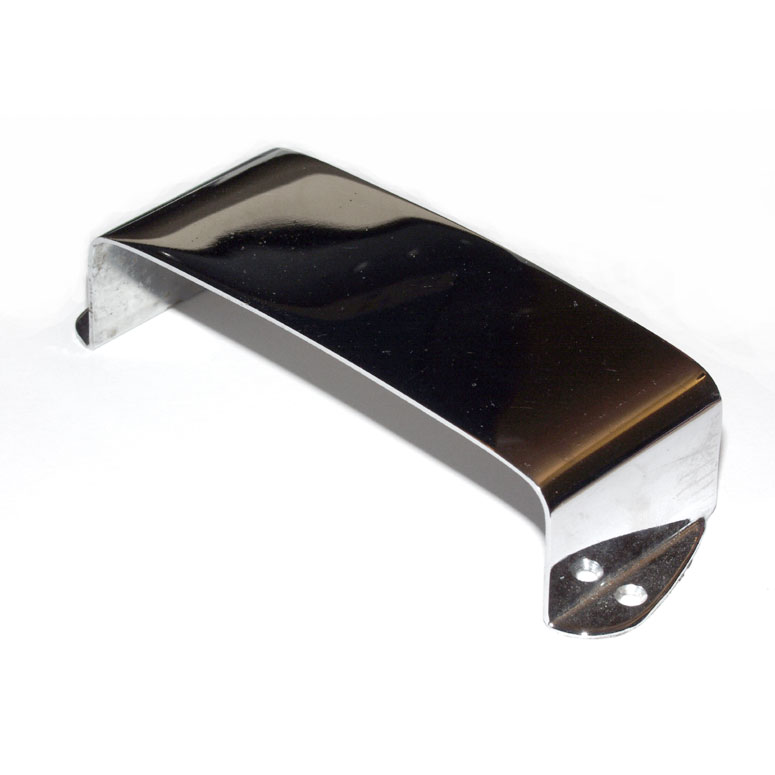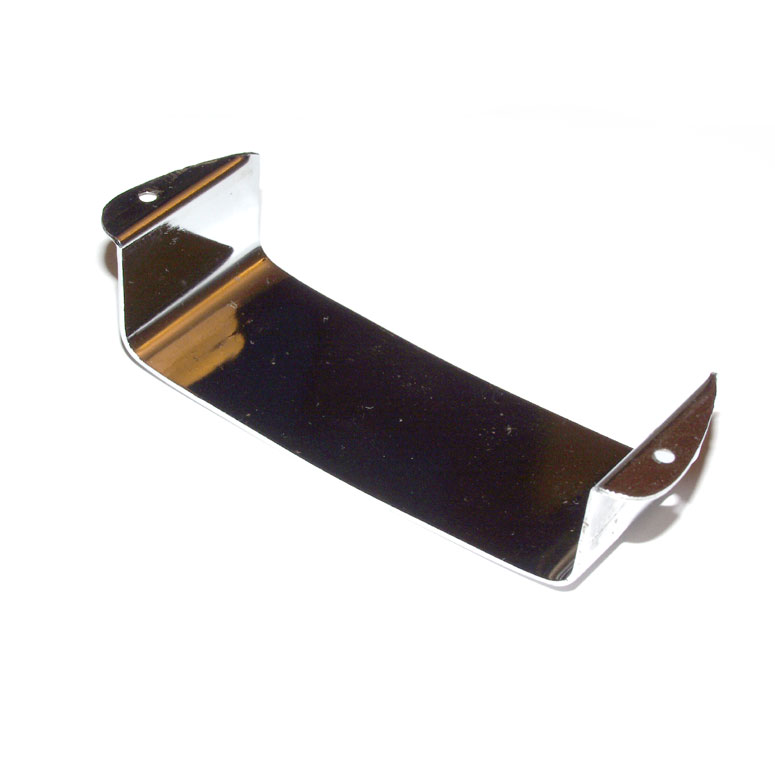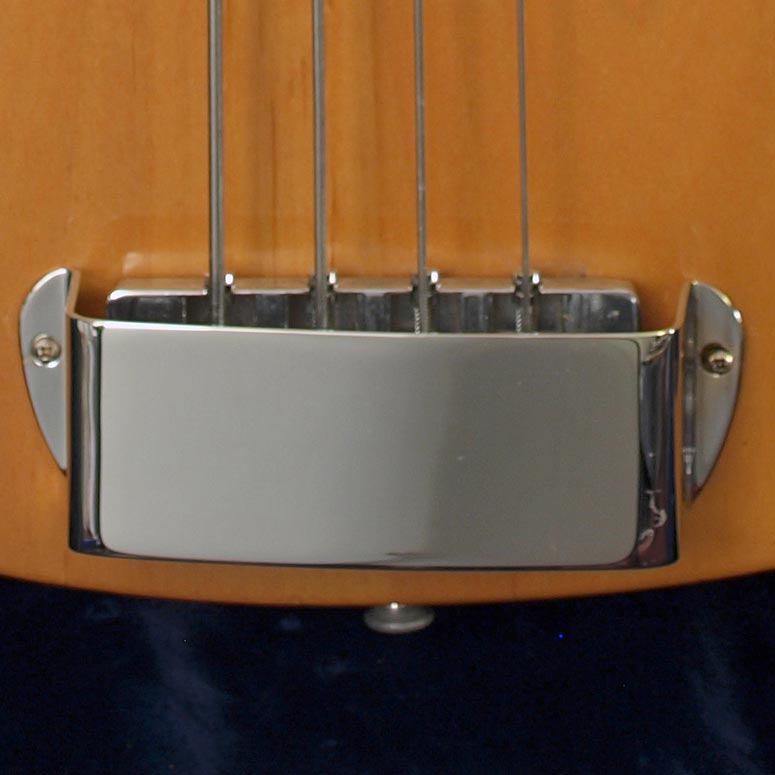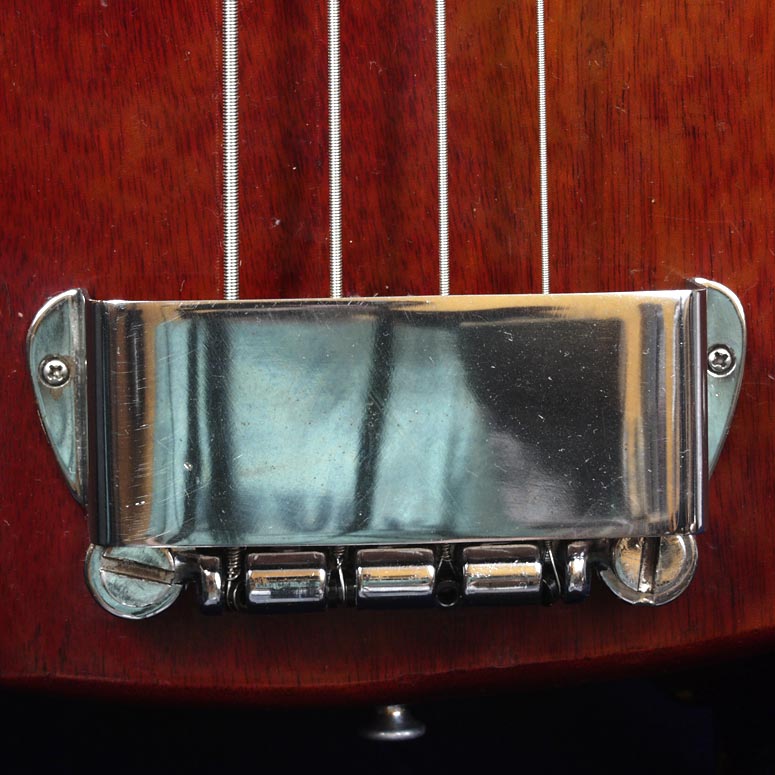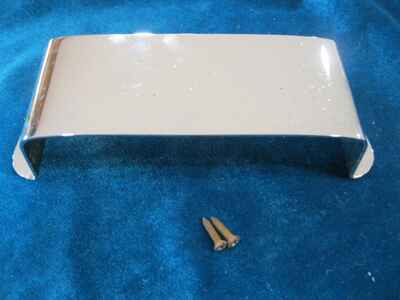One of the most widely used piece of Gibson hardware. This part is more typically described as a handrest in Gibson literature, though I prefer the more descriptive 'bridge cover', to avoid confusion with the early/mid 1960s handrest that preceded it. Nickel (early sixties only) or chrome plated brass. Bridge covers were first fitted to Thunderbird basses from 1963; nickel plated, at first at least, but with the advent of the new intonatable tune-o-matic bridge (circa 1967) chrome plated examples were fitted to the EB-0, EB-2, EB-3, plus their Epiphone equivalent models, the Epiphone Newport and Rivoli. Later this part would be fitted to the reissued EB-1, the Les Paul Bass, Les Paul Triumph and SB-350/SB-450. In 1973, the two point tune-o-matic was replaced by the three point, but was still used in conjunction with this cover on all older basses, and the new Les Paul Signature and Ripper models.
Also not to be confused with the smaller nickel plated covers installed on the SB-300/SB-400 from 1971 and Grabber/G3 from 1974/75.
As string mutes became less-desirable on bass guitars in the early seventies, the older under-bridge mute was phased out, and a much simpler muting mechanism was devised: a strip of foam was attached to the underside of this cover, that just touched the tops of the strings, dampening vibrations in the same way as the felt of the previous mute version. To unmute, however, required the removal of the bridge cover itself.
Approximate dimensions Total length 127mm (107mm excluding tabs), mounting hole spacing 117mm, width 42mm, height mm. Plate thickness approx 1.5mm
Gibson part numbers 1965: HR750B; 1971, 1977: 19410; 1980: 80037
List of Gibson bass guitar bridges
Gibson bass bridge cover for sale
Vintage 1970's Gibson BASS Bridge cover for EB-0 EB-3
Miami, Florida, 331**, UNITED STATES OF AMERICA
$169
1970's Gibson BASS Guitar Bridge Cover EB-0 / 3 Ripper T Bird Vintage USA Part
Plano, Texas, 750**, UNITED STATES OF AMERICA
$225
... more
1970's Gibson BASS Bridge Cover Spacer Feet EB-0 EB-3 Vintage Part
Plano, Texas, 750**, UNITED STATES OF AMERICA
$89
... more
Vintage 1970s late 1960s Gibson EB0 Bass Bridge Cover With Mutes Chrome
Port Charlotte, Florida, 339**, UNITED STATES OF AMERICA
$125
... more


